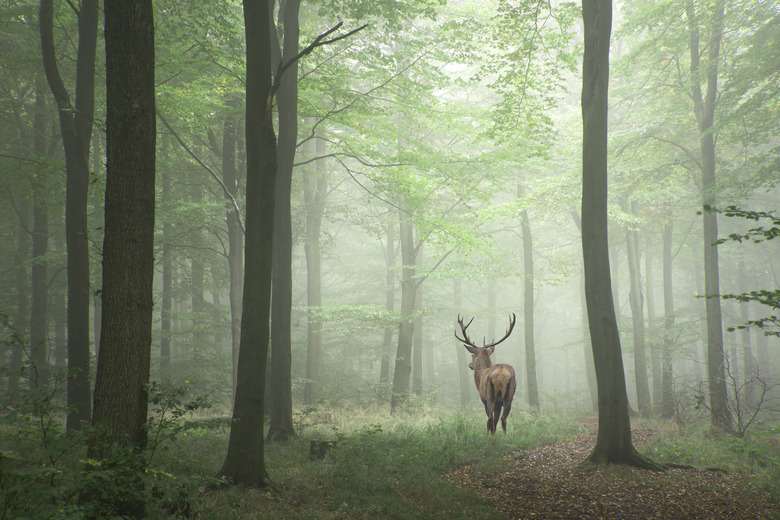What Purpose Does The Deer Have In The Ecosystem?
Deer, as with all living organisms, play an important role in an ecosystem. Their presence influences and is influenced by other organisms that live alongside them in their natural habitat. Plants and animals all need beneficial conditions in order to survive. White-tailed deer are the most numerous deer species found in the United States. In the last few decades of the Twentieth Century their population increased sharply as a consequence of key predators, such as wolves and cougars, falling in number.
Food Chain
Food Chain
Deer are herbivores, meaning they feed on leaves and plants. Herbivores normally provide the middle link in a food chain. They gain energy from consuming grass or leaves, but are themselves a food source for predators. Traditionally in North America, white-tailed deer are eaten by wolves or cougars. The energy deer absorb from consuming the organisms at the bottom of the food chain is transferred to the carnivore, the animal at the top of the food chain.
Balance
Balance
In a perfectly functioning ecosystem a natural equilibrium is achieved whereby the living organisms within it each regulate each other's populations. Plants will continue to grow as long as they continue to receive sunlight and water, therefore there will always be a plentiful supply for deer to consume. A healthy deer population in turn provides considerable prey for predators like wolves. However, it only takes human interference in the form of hunting or habitat destruction for an ecosystem to break down.
Abundance
Abundance
Unregulated hunting had nearly eradicated white-tailed deer from many parts of the United States by the turn of the 20th century. However, with protection laws put in place in many states in the early 1900s, the species rapidly returned in large numbers, so that by the 1950s hunting seasons were opened up once again. The population was able to rebound so quickly due to the extirpation of gray wolves and cougars from many parts of their historic range. With a lack of serious natural predators, it is only hunting that keeps deer numbers down.
Damage
Damage
The increased density of white-tailed deer in the U.S., caused by a lack of predators, has impacted on species diversity in the environment around them and caused a transformation of the ecosystem. An unregulated deer population causes over-browsing and means they start to devour the preferred food supplies of other wildlife, such as songbirds, because their favored vegetation is running thin. This puts other wildlife at risk. Deer browsing also disrupts the ground nesting of certain species, including amphibians, destroys certain plant activity and reduces trees and seedlings.
Cite This Article
MLA
Does, Robert van der. "What Purpose Does The Deer Have In The Ecosystem?" sciencing.com, https://www.sciencing.com/purpose-deer-ecosystem-8659608/. 13 March 2018.
APA
Does, Robert van der. (2018, March 13). What Purpose Does The Deer Have In The Ecosystem?. sciencing.com. Retrieved from https://www.sciencing.com/purpose-deer-ecosystem-8659608/
Chicago
Does, Robert van der. What Purpose Does The Deer Have In The Ecosystem? last modified August 30, 2022. https://www.sciencing.com/purpose-deer-ecosystem-8659608/
